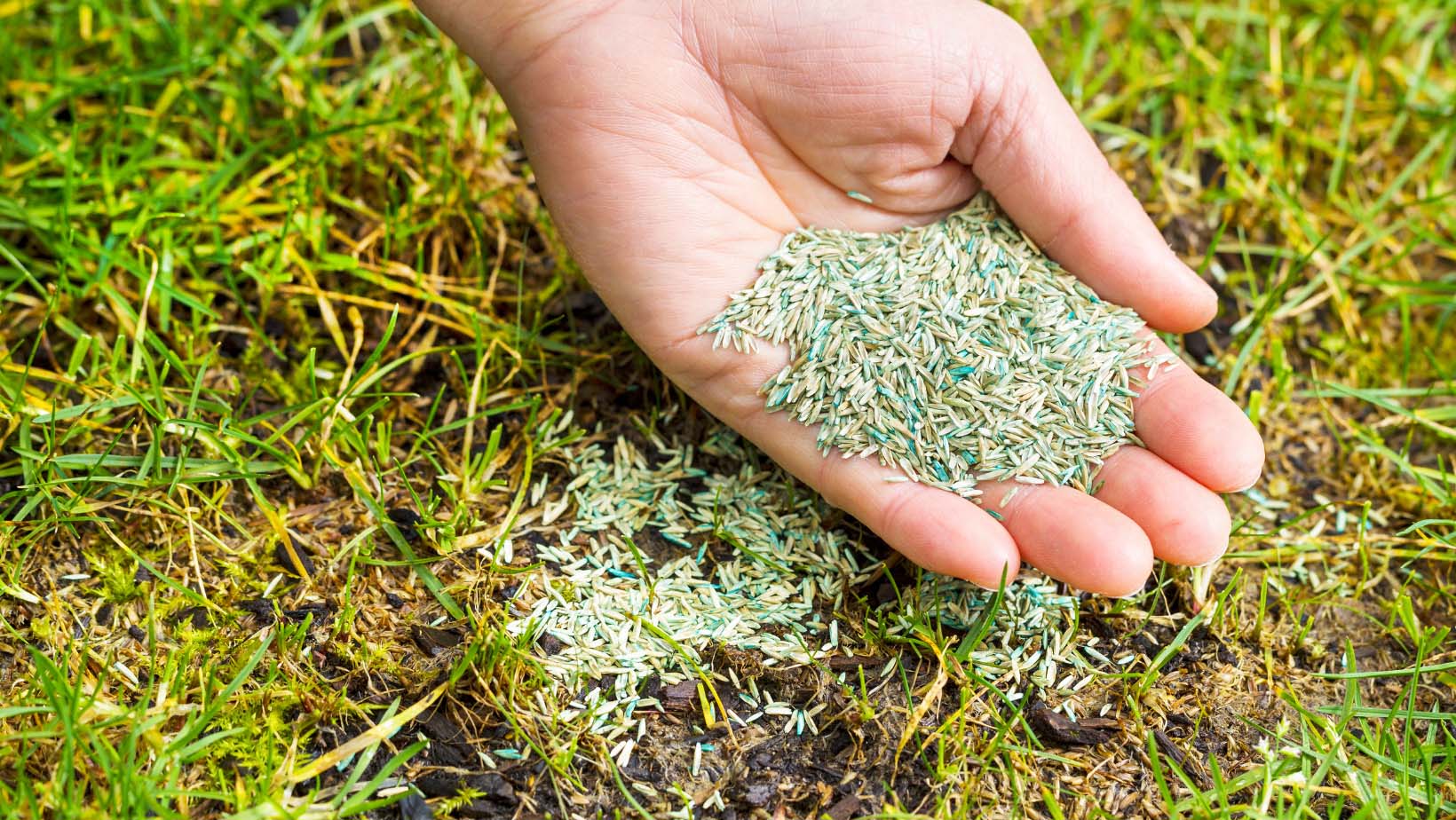Importance of a Healthy Lawn
A lush, green lawn is more than just a beautiful backdrop for your home; it’s a sign of a well-maintained property and a source of pride for many homeowners. A healthy lawn enhances your home’s curb appeal, provides a safe play area for children and pets, and even improves the environment by absorbing carbon dioxide and releasing oxygen. However, bare spots in your lawn can quickly diminish its aesthetic appeal and health. These unsightly patches not only make your lawn look neglected but can also lead to bigger problems if left untreated.
Common Causes of Bare Spots
Before you can effectively repair bare spots in your lawn, it’s important to understand what causes them. Bare spots can develop due to a variety of reasons:
Heavy Foot Traffic: Constant walking or playing on the lawn can compact the soil and damage the grass.
Pet Damage: Dogs and other pets can create bare spots by urinating in the same areas or digging.
Disease: Fungal infections or other lawn diseases can kill patches of grass, leaving bare spots.
Improper Mowing: Cutting the grass too short or using dull mower blades can stress the lawn, leading to bare spots.
Harsh Weather Conditions: Extreme heat, drought, or cold can damage grass, especially if it’s not well-adapted to your climate.
Overview of Repair Process
Repairing bare spots in your lawn may seem like a daunting task, but with the right approach, you can restore your lawn to its former glory. The process involves assessing the damage, preparing the soil, choosing the right grass seed, planting it properly, and caring for the new grass as it grows. In this article, we’ll walk you through each step in detail, ensuring you have all the information you need to repair those pesky bare spots and maintain a healthy, vibrant lawn.
Identify the Cause
The first step in repairing bare spots is to identify what caused them in the first place. Understanding the root cause will help you prevent the issue from recurring. Start by closely examining the affected areas:
- Foot Traffic: If the bare spot is located in a high-traffic area, compaction is likely the issue.
- Pet Damage: Yellow or brown patches with a distinct odor could indicate pet urine.
- Disease: Look for irregular shapes, discoloration, or a powdery substance on the grass blades, which may suggest a fungal infection.
- Poor Drainage: If water tends to pool in certain areas after rain, poor drainage could be suffocating the grass.
By identifying the cause, you can take steps to prevent further damage and choose the most effective repair method.
Size and Severity of Bare Spots
Next, assess the size and severity of the bare spots. Small patches can often be repaired with simple reseeding, while larger or more severe damage might require additional steps, such as soil amendment or even a partial lawn renovation. If the bare spots are widespread or recurring, it may indicate a deeper issue with your lawn’s overall health, in which case a comprehensive lawn care plan might be necessary.
Preparing the Area for Repair
Remove Debris and Weeds
Once you’ve identified the cause and assessed the damage, it’s time to prepare the area for repair. Start by removing any debris, dead grass, and weeds from the bare spots. Weeds can compete with the new grass for nutrients, water, and light, so it’s crucial to clear the area thoroughly. Use a rake or hoe to gently remove the top layer of dead material, being careful not to damage any healthy grass surrounding the bare spot.
Loosen the Soil
Bare spots often occur because the soil is compacted, which prevents grass roots from penetrating deeply and absorbing nutrients. To address this, use a garden rake, hoe, or aerator to loosen the soil in the affected area. Loosening the soil helps improve air circulation, water infiltration, and root growth. Aim to loosen the top 2-3 inches of soil for best results.
Soil Testing and Amendment
Healthy grass needs the right balance of nutrients to thrive, so consider conducting a soil test before planting new seed. A soil test will reveal the pH level and nutrient content of your soil, helping you determine if any amendments are needed. For example, if your soil is too acidic, adding lime can help balance the pH. If the soil is nutrient-poor, incorporating compost or a balanced fertilizer can provide the necessary nutrients for grass growth. After amending the soil, rake it smooth to create an even surface for seeding.
Choosing the Right Grass Seed
Match Grass Type to Existing Lawn
When it comes to repairing bare spots, choosing the right grass seed is crucial. The seed you select should match the type of grass that already exists in your lawn. This ensures that the new grass blends seamlessly with the old, both in appearance and in its growth habits. If you’re not sure what type of grass you have, take a small sample to your local garden center for identification.
Consider your region’s climate as well:
- Cool-Season Grasses: Ideal for northern climates, these grasses thrive in cooler temperatures and include varieties like Kentucky bluegrass, fescue, and ryegrass.
- Warm-Season Grasses: Better suited for southern climates, warm-season grasses like Bermuda, zoysia, and St. Augustine thrive in hot, humid conditions.
Quality of Grass Seed
Investing in high-quality grass seed is essential for achieving the best results. Look for seed that is labeled as “certified” or “premium,” as these are tested for purity and germination rates. High-quality seeds are more likely to establish quickly, resist disease, and produce a lush, dense lawn. Consider using a seed blend or mixture, which combines several types of grass to ensure adaptability to different conditions in your lawn.
Planting and Sowing the Grass Seed
Seed Application Techniques
To plant the grass seed, you’ll want to apply it evenly over the bare spots. There are several methods you can use:
- Broadcast Seeding: For larger areas, a broadcast spreader can help distribute the seed evenly. This method is quick and efficient but requires careful calibration of the spreader.
- Hand Seeding: For smaller bare spots, hand seeding allows for precise placement of the seed. Simply sprinkle the seed over the area, ensuring even coverage.
- Seed Spreader: A handheld seed spreader is a great tool for medium-sized areas, offering more control than a broadcast spreader but greater coverage than hand seeding.
After applying the seed, lightly rake the area to ensure good seed-to-soil contact. This helps the seed germinate more effectively.
Covering the Seed
Once the seed is in place, it’s important to protect it. Lightly cover the seed with a thin layer of topsoil or compost, about 1/8 to 1/4 inch deep. This layer helps retain moisture, protect the seed from birds, and prevent erosion. In areas prone to erosion or where birds are a significant problem, you can also cover the seeded area with a light layer of straw or mulch.
Watering the Newly Seeded Area
Watering is critical to the success of your lawn repair efforts. New grass seed needs consistent moisture to germinate and grow. Immediately after planting, water the area thoroughly, ensuring the soil is moist but not waterlogged. Continue watering lightly once or twice a day for the first few weeks, until the grass is established. As the grass begins to grow, reduce the frequency of watering but increase the depth to encourage deep root growth.
Post-Planting Care
Protecting the Area
While your new grass is establishing, it’s important to protect the area from foot traffic, pets, and other disturbances. Consider setting up temporary barriers or signs to keep people and animals off the newly seeded spots. Even light foot traffic can disrupt the delicate process of seed germination, so make sure the area remains undisturbed.
Monitoring and Maintenance
Regular monitoring is essential to ensure the success of your repair efforts. Check the seeded areas daily to ensure they remain moist and that the grass is germinating evenly. Once the new grass reaches a height of 3-4 inches, you can mow it for the first time. Be sure to use a sharp mower blade and set the mower to a high setting to avoid damaging the young grass.
Addressing Any Issues
Despite your best efforts, you may encounter some issues as the new grass grows. Common problems include poor germination, uneven growth, or weed invasion. If the grass is not germinating well, it may be due to insufficient water, poor seed-to-soil contact, or low-quality seed. In such cases, overseeding the area or applying a starter fertilizer may help. If weeds are a problem, consider spot-treating them with a selective herbicide or pulling them by hand.
Long-Term Lawn Care Tips
Preventing Future Bare Spots
To prevent bare spots from returning, it’s important to adopt good lawn care practices:
- Proper Mowing: Keep your grass at the recommended height for its type. Mow regularly with a sharp blade, and avoid cutting more than one-third of the grass height at a time.
- Fertilization: Fertilize your lawn according to the needs of your grass type. Use a slow-release fertilizer to provide consistent nutrients over time.
- Pest Management: Monitor your lawn for signs of pests or disease, and address issues promptly with appropriate treatments.
Seasonal Lawn Care Practices
Adjust your lawn care practices based on the season to keep your lawn healthy year-round:
- Spring: Aerate your lawn to relieve compaction and overseed if needed. Fertilize to encourage strong growth.
- Summer: Water deeply and infrequently to promote deep root growth. Mow at a higher setting to protect the grass from heat stress.
- Fall: Reseed or overseed any thin areas, and apply a fall fertilizer to strengthen the grass for winter.
- Winter: Avoid heavy foot traffic on dormant grass, and keep the lawn free of debris.
Enhancing Lawn Health
Beyond repairing bare spots, you can take additional steps to enhance the overall health of your lawn:
- Organic Fertilizers: Consider using organic fertilizers, which improve soil health and promote long-term growth.
- Lawn Care Schedule: Develop a regular lawn care schedule that includes mowing, watering, fertilization, and pest control.
- Soil Health: Regularly test your soil and amend it as needed to maintain the right pH and nutrient balance.
Conclusion
Repairing bare spots in your lawn requires careful attention to detail, but the effort is well worth it. By assessing the damage, preparing the soil, choosing the right grass seed, planting it correctly, and providing proper post-planting care, you can successfully restore your lawn to its full, lush potential.
Don’t be discouraged if the process takes time. With patience and consistent care, your lawn will recover and thrive. Remember, a beautiful lawn doesn’t happen overnight, but by following these tips and staying vigilant, you’ll be well on your way to a yard you can be proud of.
Additional Resources
Recommended Tools and Products
Soil Testing Kit: For assessing soil pH and nutrient levels.
Seed Spreader: To ensure even seed distribution.
Quality Grass Seed: Certified seeds for optimal germination.
Compost or Topsoil: To cover seeds and protect them.
Further Reading
Lawn Care 101: A Beginner’s Guide to Lawn Maintenance
The Best Times to Overseed Your Lawn
How to Prevent Lawn Diseases
This detailed guide equips you with the knowledge and tools you need to repair bare spots in your lawn effectively. By following these steps, you’ll create a healthy, beautiful lawn that enhances your home’s value and provides a welcoming outdoor space for years to come.


0 Comments